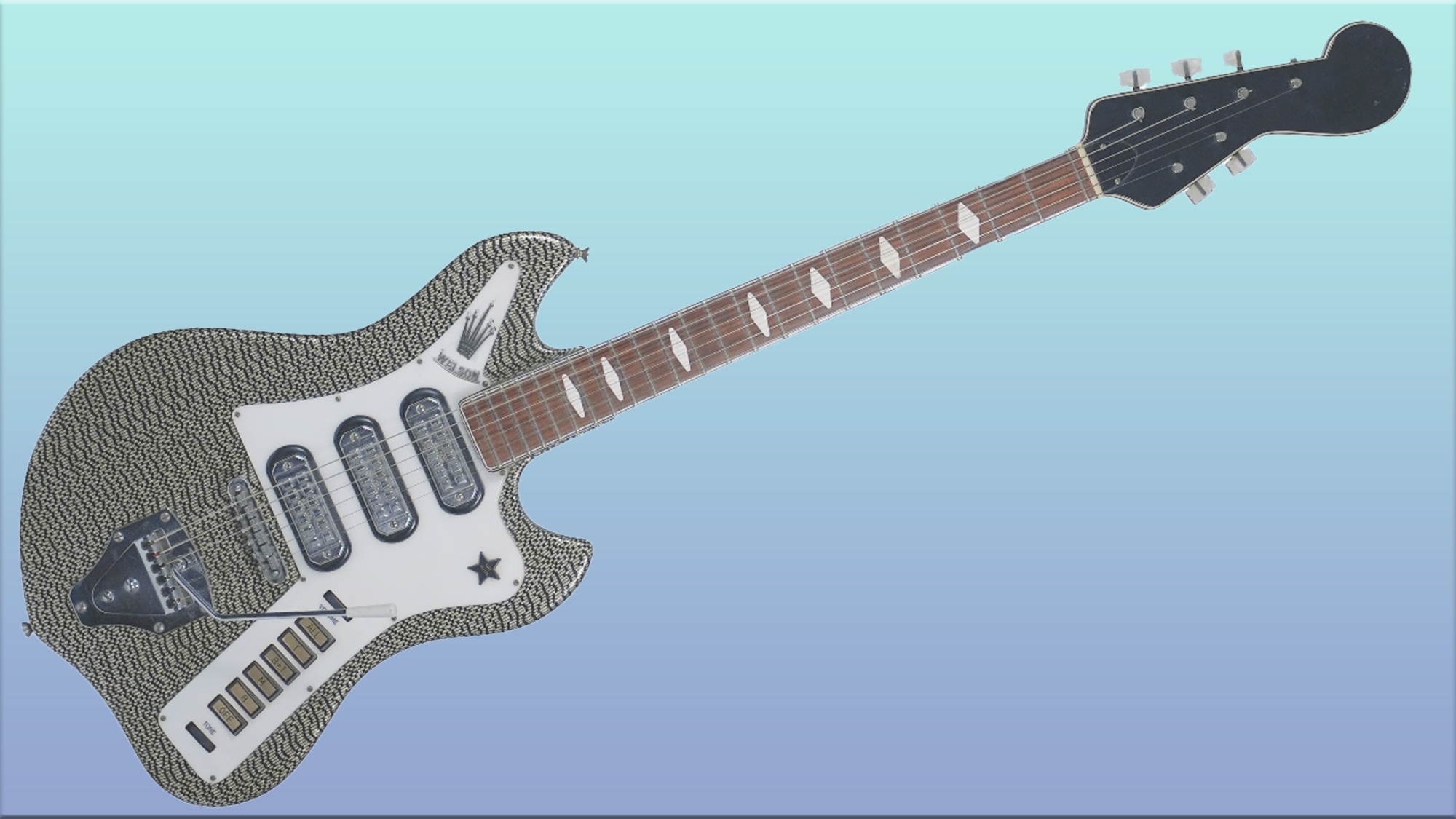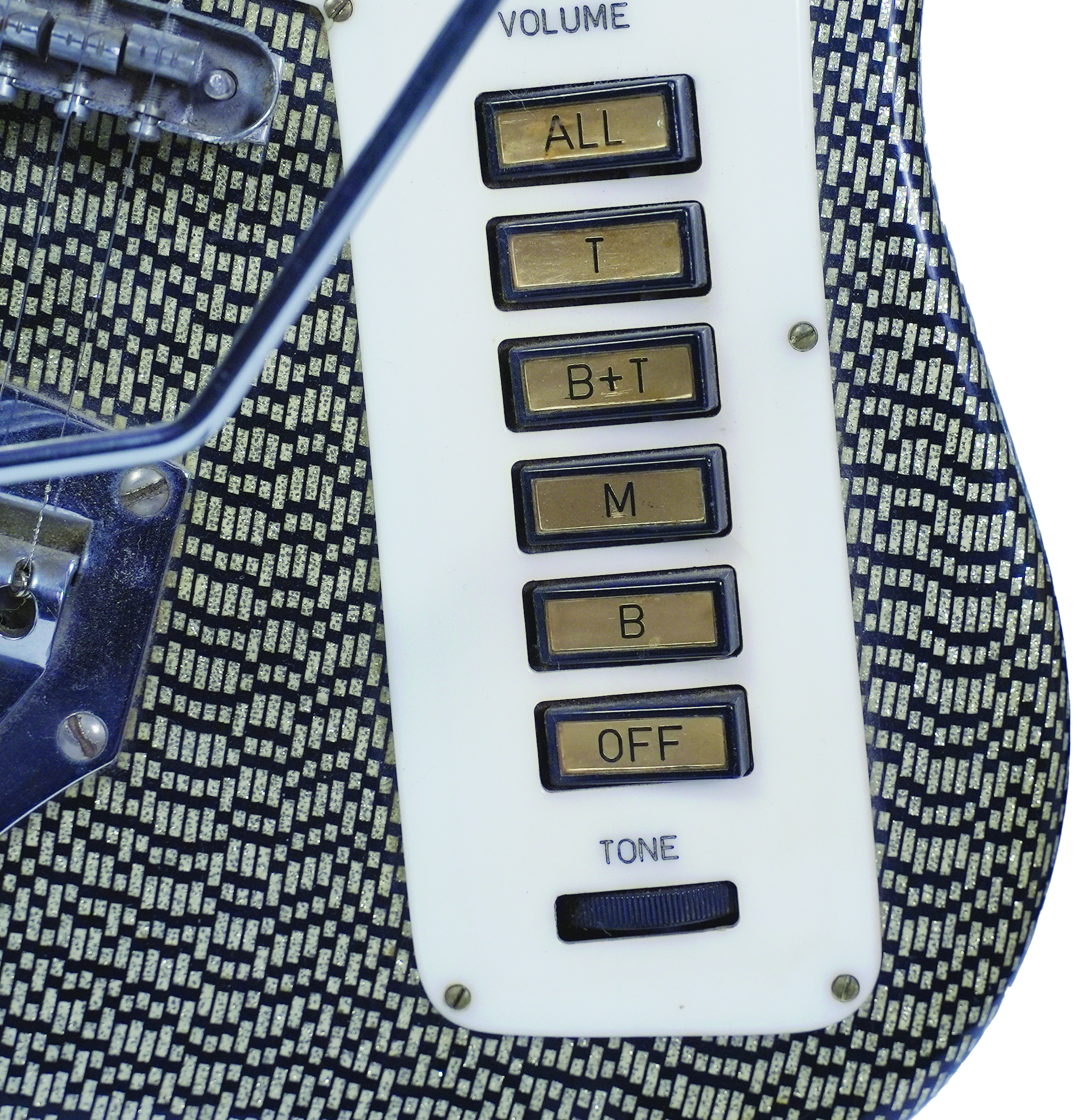“The 10-inch headstock is an eye catcher, as are the flank of accordion-style pickup selector buttons and the diamond fretboard inlays. But mamma mia, that finish!”: The 1964 Welson Kinton V3 – whack job or Italian beauty... or both?
Add offset cutaways and an unusual body shape to all of the above features, and you’ve got a lot of weird in one guitar

Of the many weird guitars from the 1960s, the Italians are my favorites. EKO, Vox, Crucianelli, Wandre, and Gemeli... it’s hard to keep up. The Welson company, like its Italian neighbor EKO, produced guitars under many names and even made a few models for Vox and Wurlitzer. Welson was founded in the 1920s, in the city of Castelfidardo, by Orlando Quagliardi.
The company made accordions but switched to manufacturing electric guitars as demand for the instrument increased in the ’60s. The 1964 Kinton V3 model shown here reveals that Welson was a fine instrument maker, even though the delightfully cheesy accordion-style celluloid wraps – among numerous other features – might suggest otherwise.
Weirdo factor
The 10-inch headstock is an eye catcher, as are the three large chrome-covered pickups, the flank of accordion-style pickup selector buttons and the diamond fretboard inlays. But mamma mia, that finish! This example features gold rectangles interspersed with black blocks, and the sparkles in the gold really pop under stage lights. Combine all that with the offset cutaways and unusual body shape, and you’ve got a lot of weird in one guitar.

Playability and sound
The 22-fret neck has a zero fret and is painted gloss black, as is the headstock. It’s chunky, like an acoustic guitar’s neck, and has a rosewood fingerboard. Although this model is standard scale, I’ve strung it as a baritone, using D’Addario nicklewound (.014–.068) strings, which work great with the neck’s tension. No extra adjustments were necessary. I’ve tuned it B to B, and, man, what a sound!
The three pickups have great tone but are microphonic, surprisingly. The bridge unit is on the bright side, the middle is full-bodied and great for strumming, and using the neck pickup makes the Kinton sound like a bass, especially with baritone strings. The pickup switches allow for a variety of combinations and include a universal killswitch. The tone and volume wheels are global.
Hardware-wise, the fancy translucent tuners still work beautifully and are enclosed in groovy chrome teardrops, while the bridge is of the Tune-o-matic variety and pairs nicely with the tremolo system, which works surprisingly well. Played with distortion, the Welson is aggressive, loud, and growly. And as many of you may know, the sound of a low-C power chord is breathtaking.
Value
In 1964, the Welson Kinton V3 had a list price well under $200. Today, these guitars are revered by players and collectors alike, and you can expect to pay upward of $2,000 for one in good condition.
Get The Pick Newsletter
All the latest guitar news, interviews, lessons, reviews, deals and more, direct to your inbox!
Why it rules
I can’t say it plays great by modern standards, but I’ve gotten used to it. Besides, it looks fantastic and sounds wholly unique.
• Thanks to Gabriel Horn at my favorite California music store, The Starving Musician, for hipping me to the fact that a standard electric can be strung as a baritone.
Guitar Center's Guitar-A-Thon is back, and it includes a colossal $600 off a Gibson Les Paul, $180 off a Fender Strat, and a slew of new exclusive models
"We tried every guitar for weeks, and nothing would fit. And then, one day, we pulled this out." Mike Campbell on his "Red Dog" Telecaster, the guitar behind Tom Petty & the Heartbreakers' "Refugee" and the focus of two new Fender tribute models










